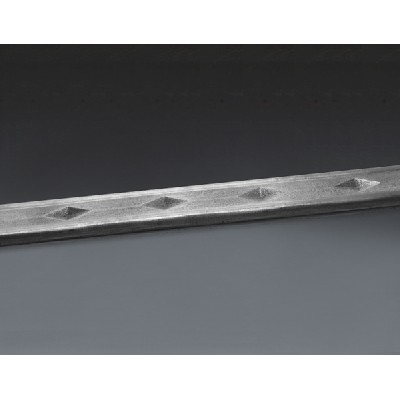The use of wire in Jiangmen Wire Drawing Factory
The wire classification of the wire drawing factory is as follows:
According to the chemical composition of steel, wire rods in wire drawing factories can be divided into two categories. One type is carbon steel, which can be divided into low carbon steel, medium carbon steel, and high carbon steel according to its carbon content. 2、 Alloy steel. At present (1992), there are more than 30 types of steel for wire rods, including ordinary low-carbon steel, carbon steel, welding rod steel, wire rope steel, stainless steel, heat-resistant steel, rolling bearing steel, etc.
According to the different cross-sectional shapes, wires can be circular, square, elliptical, trapezoidal, contour, etc. There are very few squares, very few irregular shapes, and generally many circular cross-sections.
What is the purpose of wire drawing in a wire drawing factory?
The main purposes of material selection can be summarized into two types. One is used for building materials. Two types of drawing materials.
The wires used as building materials include ordinary low-carbon steel, carbon steel, carbon spring steel, etc. The varieties are circular and threaded, with specifications ranging from 6 to 25mm in diameter. Applications with diameters ranging from 28 to 32mm are also commonly used. Building material wires must ensure their chemical composition and weldability, as well as uniform and stable physical properties, in order to facilitate cold bending, cold drawing, and cold drawing. The wires of various specifications and diameters used in construction projects are delivered in reels, and can be cut according to their length to avoid waste.

There are many types of wires used as drawing materials, but only circular ones. In order to reduce the number of pulling cycles, the diameter is generally 5-9mm, and wires with a diameter greater than 10mm are also used for this purpose. The wire used as a raw material for brushes requires uniform and stable chemical composition and physical properties. The metallographic structure should be as smooth as possible, the size should be accurate, the surface should be smooth, and the oxidized iron plate should be thin, which is helpful for removal.
Overall, the selection of materials has a wide range of applications and occupies an important position in various sectors of the national economy. Part of the wire can be used directly after rolling, mainly for auxiliary reinforcement of reinforced concrete and welding frame members. Part of it is processed raw materials, which are then used after further processing. For example, various types of wire can be pulled out and then twisted into wire, or twisted into wire mesh again. Use rivets after hot forging or cold forging; After cold end and rolling, bolts are made, and various cutting and heat treatments are carried out to manufacture mechanical parts or cutting tools. Manufacturing springs through winding and heat treatment. wait.
Article source: Jiangmen Wire Drawing Factory http://www.bzcpm.com
-
11-28
The fundamental requirements for the maintenance of CNC machine tools
Numerical control machine tools are a typical electromechanical integration product that comprehensively applies advanced skills such as computer skills, active control skills, lateral measurement ski
-
09-19
Those who know how to draw messy patterns
Those who know how to draw messy patternsRandom pattern drawing is a type of irregular and inconspicuous matte wire pattern obtained by rubbing the aluminum plate back, forth, left, and right under th
-
09-19
Normal failure and early failure of wire drawing molds
Normal failure and early failure of wire drawing moldsDrawing dies are used in many production processes, and natural wear or slow plastic deformation and fatigue cracks due to conflicts are considere
-
04-18
Jiangmen Wire Drawing Factory: How to easily control the speed of the wire drawing machine
The wire drawing machine system has a high demand for speed control. For a mechanical equipment wire drawing machine manufacturer, this control system can provide a very accurate and lubricated line s
